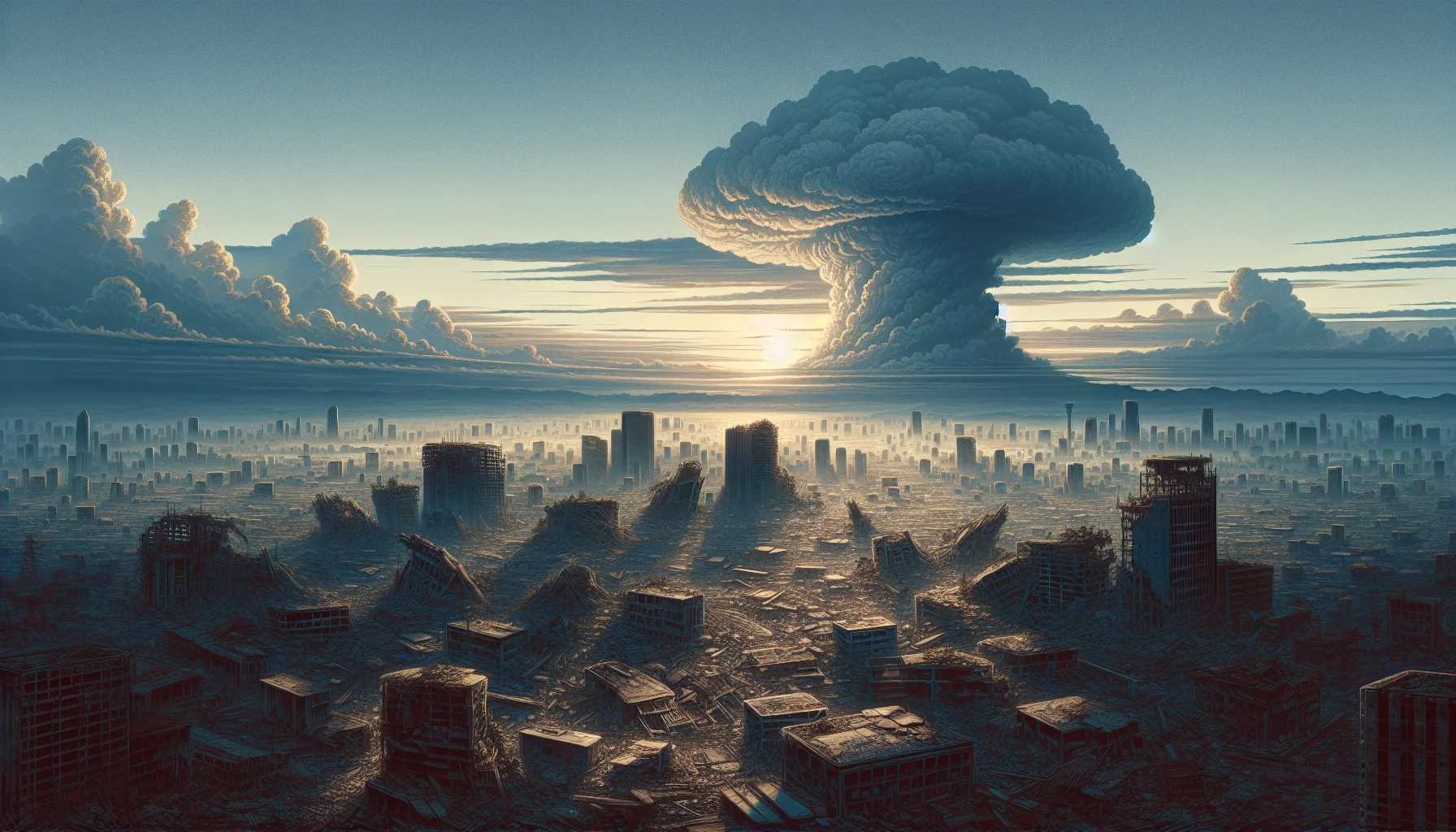
The Hiroshima Bombing
by: The Calamity Calendar Team
August 6, 1945
The Final Days of a Global Conflict
As the summer of 1945 unfolded, the world was caught in the throes of relentless warfare, though change was in the air. With Germany's defeat now a reality, the focus shifted entirely to Japan, the remaining Axis power resisting the Allies. In the build-up to this moment, the decision-makers of the Allied forces found themselves at a crossroads, grappling with how to bring the persistent conflict with Japan to a definitive end.
The concept of an invasion loomed large, a daunting prospect predicted to inflict heavy casualties on both military forces and civilians alike. But the attention of key players now turned to a secret initiative—a project cloaked in secrecy and ambition—the Manhattan Project. Under this program's formidable scope, the world's first atomic bombs had been developed, a potential tool to coerce surrender without the prolonged siege they so dearly wanted to avoid.
In July 1945, amid the tense deliberations of the Potsdam Conference, President Harry S. Truman made a momentous decision. The development of these nuclear weapons presented an opportunity to compel Japan into surrender—a swift conclusion to a global conflict that had ravaged the planet for years. It was with this conviction that plans were set into motion for Hiroshima, a bustling city on Japan's Honshu Island, to become a target as the stage was set for an event that would etch its presence into the annals of history.
An Unsettling Morning: August 6, 1945
As dawn broke over Hiroshima on August 6, 1945, it seemed like any other day. Yet, unbeknownst to the city's inhabitants, a B-29 bomber named the Enola Gay was descending upon them from the clear blue skies. At exactly 8:15 a.m., the decision carried out weeks prior crystalized into action as "Little Boy," the world’s first deployed atomic bomb, was released from the plane's hull and began its descent.
The impact was immediate and shattering. The bomb detonated at an altitude of approximately 600 meters, unfurling a release of energy equivalent to around 15 kilotons of TNT. The cityscape below was engulfed in a blaze of light, a flash more brilliant than any sunrise. What followed was a blast wave of unimaginable force, an unyielding wall of destruction that obliterated everything within a mile of the epicenter in a matter of moments.
A mushroom cloud—a now-familiar icon of nuclear devastation—ascended into the sky, a harrowing beacon visible from miles away. Beneath this looming symbol, a firestorm unfurled across what remained of Hiroshima, engulfing whatever the initial blast had spared. In the instantaneous wrath of this new weapon, tens of thousands of lives were extinguished, with countless more left grievously injured and burned.
Thanks for subscribing!
The Horror Unleashed
The toll was staggering. It is estimated that between 70,000 and 80,000 people perished in the fiendish embrace of the blast and the firestorm that followed. Those fortunate enough to survive the initial moments were no less victims, subject to severe burns, injuries from collapsing structures, and a new, invisible adversary—radiation. As days stretched into weeks, the number of deaths swelled to 140,000 by the year's end, compounded by the insidious and mysterious radiation sickness.
The city itself lay in ruins. About 70% of Hiroshima's infrastructure was reduced to ash, along with what was once an economic and municipal hub. The devastation was all-encompassing, rendering roads impassable and communication non-existent. For those left amid the rubble, survival seemed both agonizingly close and utterly elusive.
Aftermath and Global Reverberations
In the wreckage of Hiroshima, amid the mingled cries and silence of ruin, there was a glimmer of the event's far-reaching implications. News of the bombing soon reverberated across the globe, with a grave realization of nuclear power's destructive capabilities setting in.
The immediate effect was the hastening of Japan's surrender. On August 15, 1945, a mere nine days after the bombing, Emperor Hirohito's announcement of capitulation resounded over Japanese airwaves, signaling the end of World War II. In this declaration, Hiroshima stood as a brutal reminder of the stakes of continued resistance.
But amidst the chaos of post-war rebuilding, Hiroshima emerged as more than just a site of catastrophe. Through the pain came a commitment to peace and reconciliation, symbolized by the establishment of the Hiroshima Peace Memorial Park. Situated in the heart of what was once urban Hiroshima, the park was conceived as a monument to those who perished and a beacon of hope to prevent future nuclear conflicts.
Reimagining the Future: The Legacy of Hiroshima
The Hiroshima bombing left an indelible legacy, inspiring decades of reflection and debate about the ethics and necessity of nuclear warfare. Survivors, known as Hibakusha, have borne witness to the profound humanitarian impact of nuclear weapons, their testimonies serving as haunting reminders of the event's toll.
As time has progressed, in-depth research has unfolded into understanding radiation's long-term health consequences, fueling arguments for nuclear non-proliferation. These conversations have since expanded into initiatives across global forums, seeking to ensure that the destructive power witnessed in Hiroshima and Nagasaki remains an atrocity of the past.
Hiroshima stands today not only as a testament to the capability of destruction but also to humanity's resilience and potential for peace. As a city rebuilt and rededicated to advocating against nuclear weapons, Hiroshima offers a powerful narrative, urging remembrance, reflection, and commitment to a world without nuclear arms—a world where "never again" becomes a recognized and enduring reality.
The story of Hiroshima remains compelling in its stark contrasts—a chronicle of unparalleled loss and subsequent hope. That fateful August morning in 1945 altered the course of history, reminding us of lessons that continue to reverberate: of humanity’s profound capacity to create and, paradoxically, destroy.
Stay in the Loop!
Become a Calamity Insider and get exclusive Calamity Calendar updates delivered straight to your inbox.
Thanks! You're now subscribed.